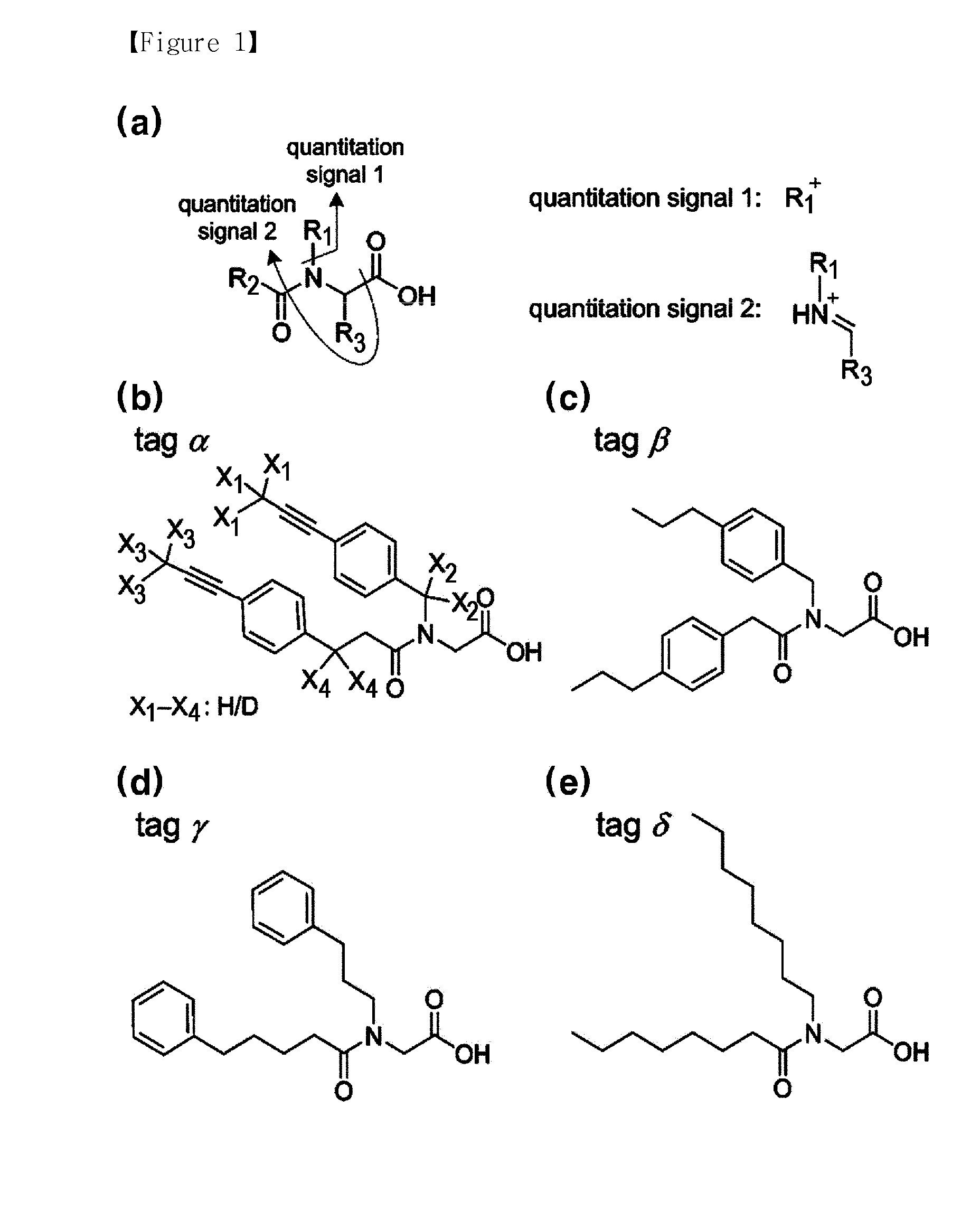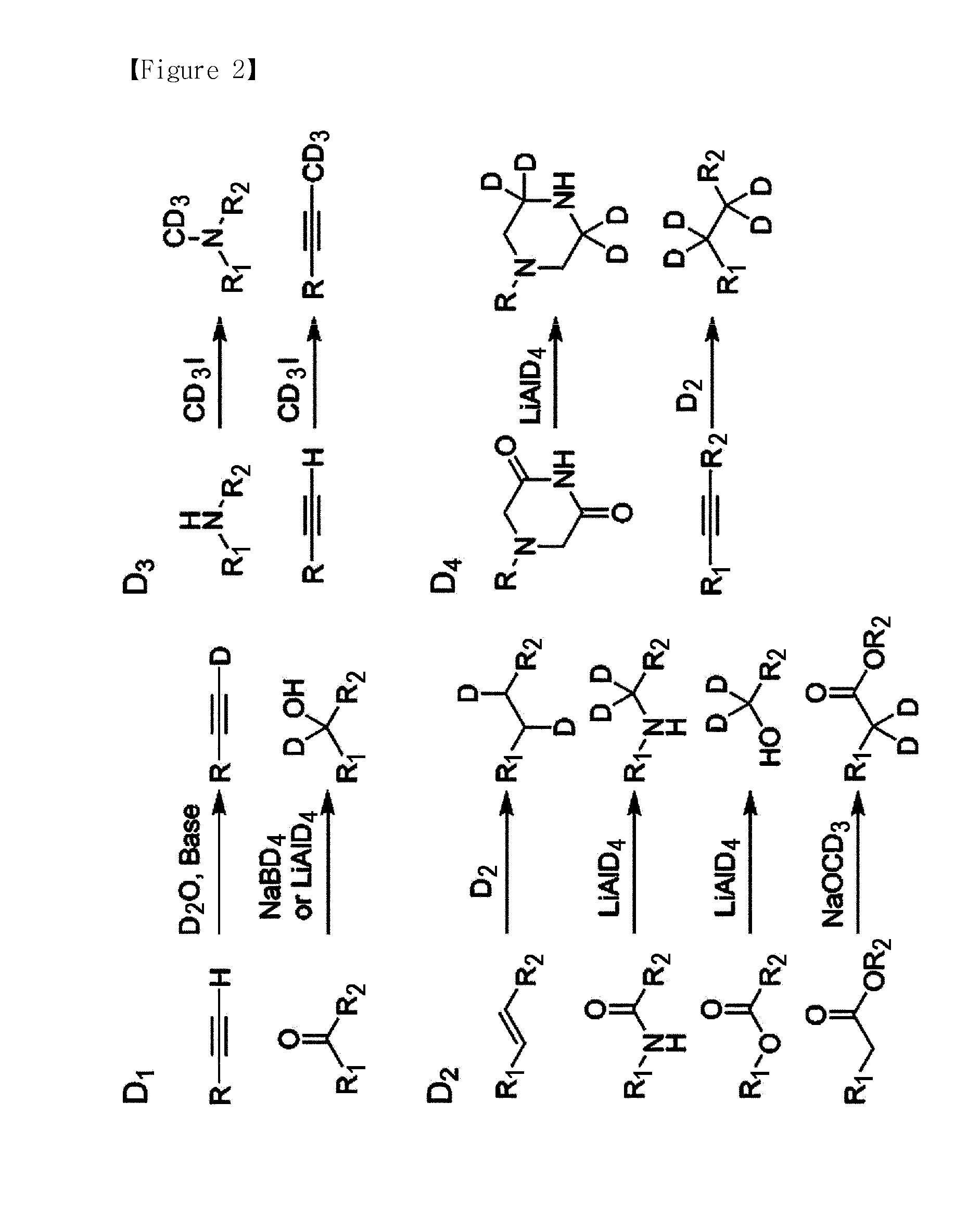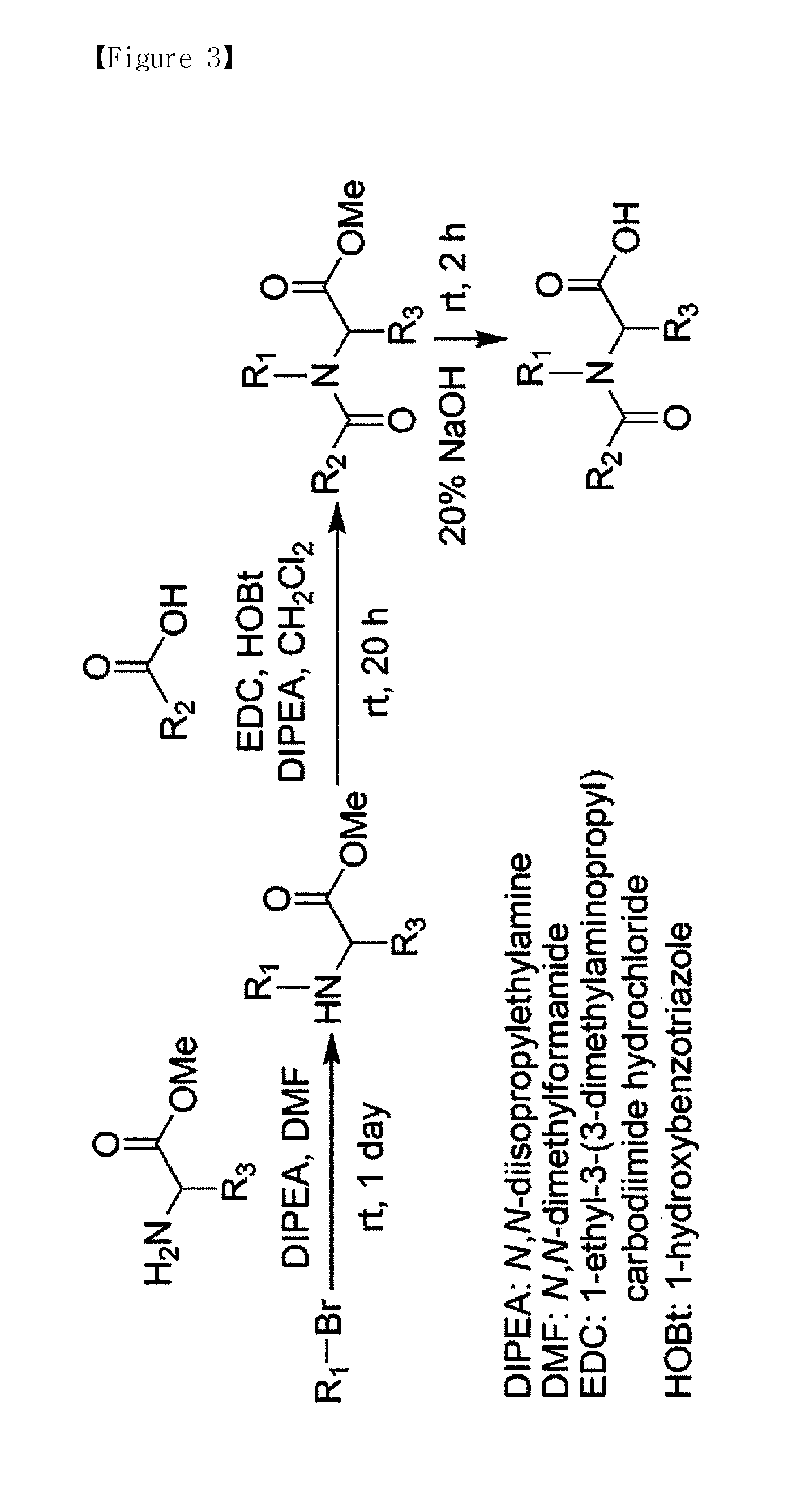Labeling Agent and Methods for Simultaneous Sequencing and Quantification of Multiple Peptides and Proteins Using the Same
a technology of simultaneous sequencing and labeling agents, applied in the field of labeling agents and methods for simultaneous sequencing and quantification of multiple peptides and proteins, can solve the problems of inability to employ quadrupole ion trap mass spectometers such as paul traps, linear ion traps, and limited synthesis of various isobars. , to achieve the effect of high mass valu
- Summary
- Abstract
- Description
- Claims
- Application Information
AI Technical Summary
Benefits of technology
Problems solved by technology
Method used
Image
Examples
example 1
[0132]In the compound (labeling agent) represented by FIG. 1(a), various structures or functional groups can be introduced into the positions of R1, R2, and R3. In the present invention, as shown in FIG. 1(b) to FIG. 1(e) by way of examples, the compounds (tag α-δ) having four kinds of the structures were synthesized and then the quantitation signals depending on each of structures or functional groups were identified.
[0133]Of said four kinds of the structures, FIG. 1(b) is the example of synthesis of the isobaric labeling agent able to quantify the multiplexed protein using hydrogen isotope. In FIG. 1(b), X1 to X4 represent the positions of deuterium as substituted.
example 1-1
Synthesis of Non-Isobaric Labeling Agent
[0134]The labeling agent was synthesized in the order as shown in FIG. 3. In the non-isobaric labeling agent, reporter unit and balance unit of tag γ and tag δ (reporter unit of γ, 3-iodopropylbenzene; reporter unit of δ, 1-iodooctane; balance unit of γ, 5-phenylpentanoic acid; and balance unit of δ, octanoic acid) were purchased to synthesize each of the labeling agents; and for tag β the reporter unit (1-(iodomethyl)-4-propylbenzene) and the balance unit (2-(4-propylphenyl)acetic acid) constituting the labeling agent were synthesized according to the procedures of FIG. 5, and then used to synthesize tag β.
Synthesis of Tag β
[0135]First, procedures for synthesis of the reporter unit and the results of nuclear magnetic resonance (NMR) of the compounds produced from respective steps are shown in the following steps 1 to 8.
Step 1: Synthesis of 4-((trimethylsilyl)ethynyl)benzoic acid methyl ester
[0136]Under argon condition, 4-bromobenzoic acid met...
example 1-2
Synthesis of Multiplexed Isobaric Labeling Agent
[0178]First, the procedures for synthesis of reporter-d5 and reporter-d0 among 4 kinds of the reporter units and the NMR results of the compounds produced from respective steps are shown in the following steps 1 to 7.
Step 1: Synthesis of 4-((trimethylsilyl)ethynyl)benzoic acid methyl ester
[0179]Under argon condition, 4-bromobenzoic acid methyl ester (500 mg, 2.33 mmol), bis(triphenylphosphine)palladium dichloride (Pd(PPh3)2Cl2; 86.1 mg, 0.116 mmol), triphenylphosphine (PPh3; 18.3 mg, 0.0698 mmol), trimethylsilyl acetylene (TMS acetylene; 493 μL, 3.49 mmol), and triethylamine (Et3N; 486 μL, 3.49 mmol) were dissolved in 10 mL of dry THF and the reaction mixture was stirred for 20 minutes at room temperature. To this cuprous iodide (CuI; 8.86 mg, 0.0465 mmol) was again added and the mixture was stirred for 15 hours at room temperature. Upon completion of the reaction, the solvent was removed by distillation under reduced pressure and then...
PUM
| Property | Measurement | Unit |
|---|---|---|
| Mass | aaaaa | aaaaa |
Abstract
Description
Claims
Application Information
 Login to View More
Login to View More - R&D
- Intellectual Property
- Life Sciences
- Materials
- Tech Scout
- Unparalleled Data Quality
- Higher Quality Content
- 60% Fewer Hallucinations
Browse by: Latest US Patents, China's latest patents, Technical Efficacy Thesaurus, Application Domain, Technology Topic, Popular Technical Reports.
© 2025 PatSnap. All rights reserved.Legal|Privacy policy|Modern Slavery Act Transparency Statement|Sitemap|About US| Contact US: help@patsnap.com



